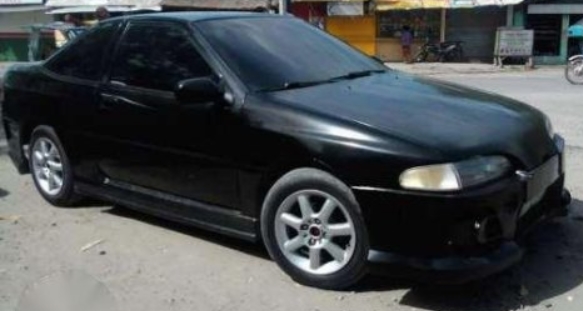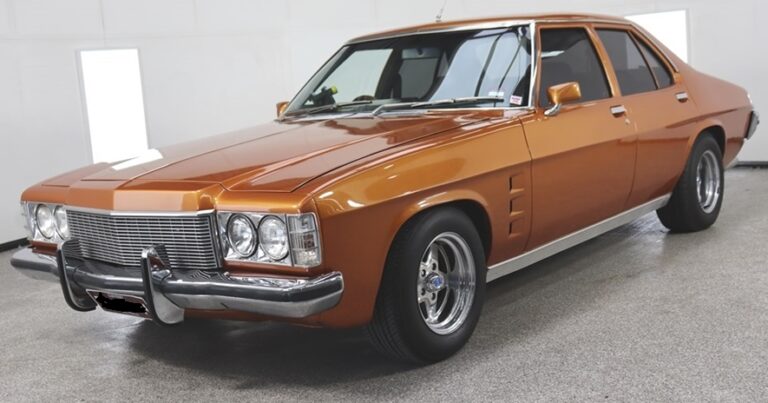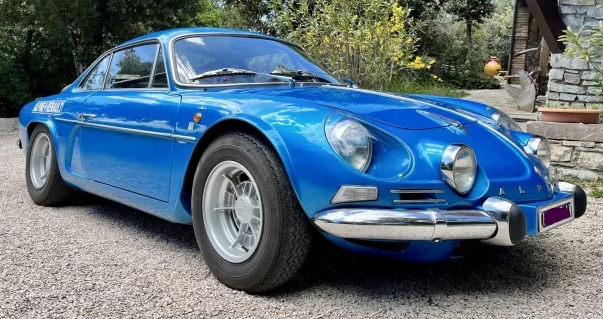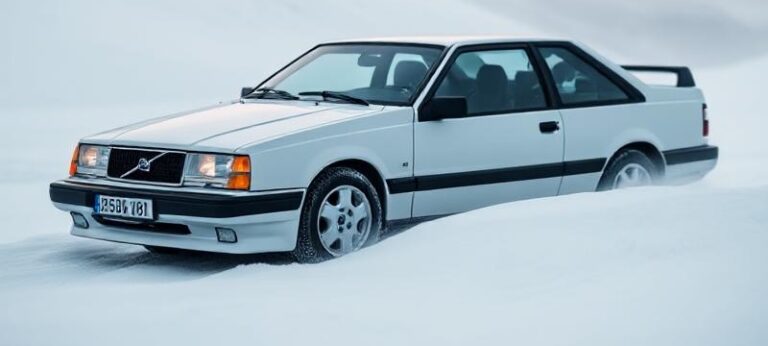The Unlikely Pioneer: Charting the Evolution of the Hyundai Scoupe
In the landscape of automotive history, some cars become legends, their names synonymous with performance and design. Others become footnotes, quirky experiments from an era of transition. The Hyundai Scoupe falls firmly into the latter category, yet its significance in the trajectory of its manufacturer is far greater than its modest reputation suggests. It was Hyundai’s first-ever sports coupe, a bold statement from a brand known exclusively for budget-friendly, utilitarian transport. More than just an Excel with a rakish body, the Scoupe was a crucial stepping stone, a learning exercise that paved the way for the performance-oriented Hyundais we know today. Its evolution from a stylish-but-slow commuter to a turbocharged, Lotus-tuned compact tells the story of a company finding its voice and ambition.
Genesis: A Statement of Intent (Pre-Production and 1991)
To understand the Scoupe, one must first understand the Hyundai of the late 1980s. The South Korean industrial giant had entered the fiercely competitive North American market with the Excel, a subcompact car that sold in astonishing numbers thanks to one primary virtue: it was incredibly cheap. While a commercial success, the Excel also cemented Hyundai’s reputation for producing bare-bones, disposable vehicles. The company knew that to grow and be taken seriously, it needed to build cars that people wanted, not just cars they could afford.
The answer was a sports coupe. The project began in the late 1980s, based on the second-generation Excel (X2) platform to keep development costs low. For the styling, Hyundai turned to the legendary Giorgetto Giugiaro at Italdesign in Italy, the same firm that had penned the original Excel. The result, first unveiled in 1988, was a clean, contemporary design with a low-slung profile, a sleek glasshouse, and a distinctive wedge shape that was very much of its time. It was an attractive package, clearly intended to lure buyers who were considering Japanese rivals like the Honda CRX, Toyota Celica, or Geo Storm.
The name itself was a point of interest and frequent confusion. Spelled “S-C-O-U-P-E,” it was officially pronounced “scoop,” a playful portmanteau of “sporty” and “coupe.”
The Hyundai Scoupe officially launched in North America for the 1991 model year. It arrived with a single engine option: a 1.5-liter (1,468 cc) single-overhead-cam (SOHC), 8-valve inline-four. This engine, known as the Mitsubishi-designed Orion (4G15), was a direct carryover from the Excel. It produced a very modest 81 horsepower and 91 lb-ft of torque. Mated to either a standard five-speed manual or an optional four-speed automatic transmission, performance was leisurely at best. Contemporary road tests clocked its 0-60 mph time at a sluggish 12 to 13 seconds. It was a car that wrote checks its sporty body couldn’t cash.
.

.
For its inaugural year, the Scoupe was offered in two distinct trim levels:
- Scoupe (Base): The entry-level model was true to Hyundai’s value-oriented roots. It featured 13-inch steel wheels with hubcaps, manual windows and locks, and a basic AM/FM cassette stereo. It was the promise of sporty styling at an rock-bottom price.
- Scoupe LS (Luxury Sport): The LS trim added a host of desirable features that moved the car slightly upmarket. These included 14-inch alloy wheels, power windows, power locks, and power mirrors. It also featured a better sound system, a tachometer (a crucial addition for any car with sporting pretensions), and often a rear spoiler to complete the look.
Despite its performance deficit, the Scoupe sold well. Its low price, long warranty (a Hyundai hallmark), and attractive styling were enough to win over buyers who valued form over function. It was a signal that Hyundai was no longer content building only sedans and hatchbacks.
The Mid-Cycle Refresh: A New Face and a New Heart (1993-1995)
After just two model years, Hyundai gave the Scoupe a significant update for 1993. This was far more than a simple cosmetic refresh; it addressed the car’s most significant weakness—its engine—and solidified its identity.
The most obvious change was the exterior styling. The front end was completely redesigned, swapping the original recessed, sealed-beam headlights for sleek, flush-mounted composite lamps. The grille was smoothed over, and the entire front fascia became more rounded and aerodynamic, giving the car a more modern and mature appearance. The rear was also updated with new taillight clusters. The result was a car that looked less like a product of the 80s and more at home in the mid-90s.
The biggest news, however, lay under the hood. For 1993, the Mitsubishi-derived Orion engine was retired. In its place came Hyundai’s first-ever proprietary engine, the Alpha. This was a landmark achievement for the company, representing a massive investment in research and development and a crucial step away from its reliance on Mitsubishi for powertrain technology.
The new Alpha engine was also a 1.5-liter (1,495 cc) inline-four, but it was a more advanced design. It featured three valves per cylinder (two intake, one exhaust) and produced a healthier 92 horsepower and 97 lb-ft of torque. While a gain of 11 horsepower may seem minor, it made a noticeable difference in drivability and dropped the 0-60 mph time into the 10-second range, moving the Scoupe from sluggish to adequate. This new engine became the standard powerplant for all non-turbo models from 1993 until the end of its production run.
Another key improvement for the facelifted models was a refined suspension. Seeking to imbue their coupe with more credible handling dynamics, Hyundai consulted with Lotus Engineering of the UK. The British firm, famed for its chassis tuning expertise, helped retune the Scoupe’s MacPherson strut front and trailing-arm rear suspension. The result was a car that was more composed and responsive in the corners, finally delivering a driving experience that began to align with its sporty looks.
The trim levels for the naturally aspirated models were simplified following the refresh:
- Scoupe (Base): Continued as the value leader, now with the more powerful Alpha engine and updated styling.
- Scoupe LS: Remained the luxury-oriented trim, adding creature comforts and alloy wheels, and benefiting from the same engine and suspension upgrades.
Reaching its Peak: The Scoupe Turbo (1993-1995)
The 1993 model year didn’t just bring a new engine; it brought a second, far more exciting one. Alongside the base Alpha engine, Hyundai introduced the Scoupe Turbo, the model that finally delivered the performance the car’s styling had always promised.
Using the new Alpha engine as a base, Hyundai engineers added a small Garrett T15 turbocharger and an intercooler. This forced-induction setup boosted output to a respectable 115 horsepower and 123 lb-ft of torque. Suddenly, the Scoupe was a legitimate contender in the budget sport compact segment. The 0-60 mph sprint now took around 9 seconds, a massive improvement that put it on par with rivals like the Geo Storm GSi.
The Scoupe Turbo wasn’t just about straight-line speed. It directly benefited from the Lotus-tuned suspension, providing a much sportier and more engaging driving experience. It was fitted exclusively with a five-speed manual transmission and came with four-wheel disc brakes (a significant upgrade over the front-disc/rear-drum setup of the non-turbo models). Visually, the Turbo was distinguished by unique 14-inch alloy wheels, more prominent “TURBO” badging, and a slightly more aggressive front air dam.
The introduction of the Turbo model created a new top-tier trim:
- Scoupe Turbo: This became the flagship of the lineup. It included all the features of the LS trim, plus the turbocharged engine, enhanced suspension, and superior braking system. It was the ultimate expression of what the Scoupe could be and represented Hyundai’s growing confidence as an automaker. In some overseas markets, such as the United Kingdom, this model was badged as the Scoupe GT.
The End of an Era and a Lasting Legacy
The Hyundai Scoupe continued in its refreshed and turbocharged forms through the 1995 model year. By then, however, the platform was aging, and Hyundai was already hard at work on its successor. The Scoupe had served its purpose. It had successfully shifted public perception of the brand, proven that Hyundai could design and build its own engines, and provided invaluable experience in the sports coupe market.
Its replacement, the 1996 Hyundai Tiburon (known as the Hyundai Coupe in Europe and other markets), was a revelation. Built on a dedicated platform with dramatic, fluid styling and more powerful engine options, the Tiburon was a far more serious and capable sports car. But it couldn’t have existed without the Scoupe. The Scoupe was the necessary first draft, the trial run that allowed Hyundai to make its mistakes, learn its lessons, and build the foundation for future success.
Today, the Scoupe is a rare sight on the road, often forgotten in the shadow of its more popular Japanese contemporaries and its own more accomplished successor. Yet, its legacy is undeniable. It was the car that introduced Hyundai’s first in-house engine, the Alpha, a powertrain family that would go on to power millions of Hyundai vehicles for over a decade. It was the first time the company collaborated with a legendary firm like Lotus to hone its chassis dynamics. And most importantly, it was Hyundai’s first brave step out of the economy-car box—a quirky, affordable, and evolving coupe that proved the little brand from Korea had big ambitions. It was, in every sense, a pioneer.







